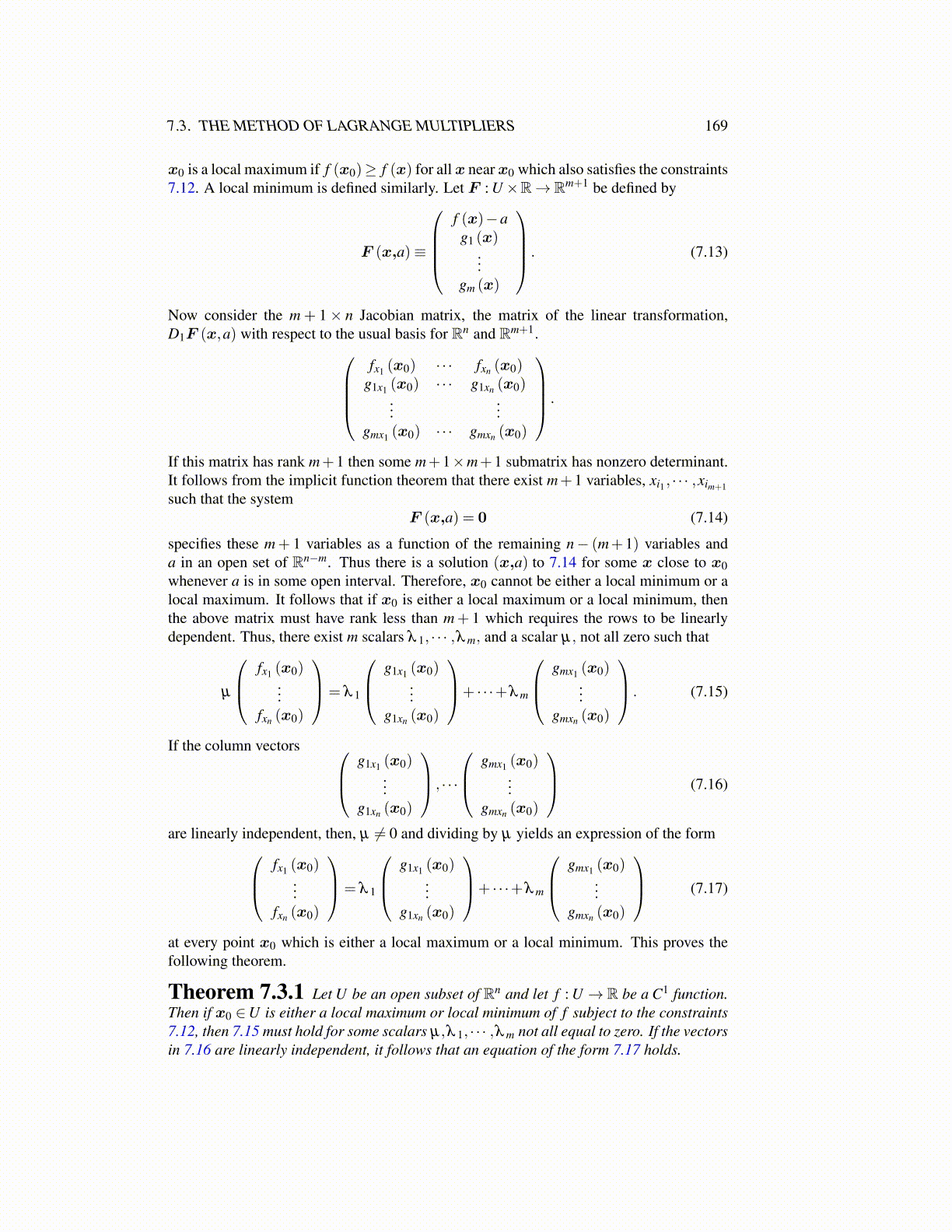
7.3. THE METHOD OF LAGRANGE MULTIPLIERS 169
x0 is a local maximum if f (x0)≥ f (x) for all x near x0 which also satisfies the constraints7.12. A local minimum is defined similarly. Let F : U×R→ Rm+1 be defined by
F (x,a)≡
f (x)−ag1 (x)
...gm (x)
. (7.13)
Now consider the m + 1× n Jacobian matrix, the matrix of the linear transformation,D1F (x,a) with respect to the usual basis for Rn and Rm+1.
fx1 (x0) · · · fxn (x0)g1x1 (x0) · · · g1xn (x0)
......
gmx1 (x0) · · · gmxn (x0)
.
If this matrix has rank m+1 then some m+1×m+1 submatrix has nonzero determinant.It follows from the implicit function theorem that there exist m+1 variables, xi1 , · · · ,xim+1such that the system
F (x,a) = 0 (7.14)
specifies these m+ 1 variables as a function of the remaining n− (m+1) variables anda in an open set of Rn−m. Thus there is a solution (x,a) to 7.14 for some x close to x0whenever a is in some open interval. Therefore, x0 cannot be either a local minimum or alocal maximum. It follows that if x0 is either a local maximum or a local minimum, thenthe above matrix must have rank less than m+ 1 which requires the rows to be linearlydependent. Thus, there exist m scalars λ 1, · · · ,λ m, and a scalar µ, not all zero such that
µ
fx1 (x0)...
fxn (x0)
= λ 1
g1x1 (x0)...
g1xn (x0)
+ · · ·+λ m
gmx1 (x0)...
gmxn (x0)
. (7.15)
If the column vectors g1x1 (x0)...
g1xn (x0)
, · · ·
gmx1 (x0)...
gmxn (x0)
(7.16)
are linearly independent, then, µ ̸= 0 and dividing by µ yields an expression of the form fx1 (x0)...
fxn (x0)
= λ 1
g1x1 (x0)...
g1xn (x0)
+ · · ·+λ m
gmx1 (x0)...
gmxn (x0)
(7.17)
at every point x0 which is either a local maximum or a local minimum. This proves thefollowing theorem.
Theorem 7.3.1 Let U be an open subset of Rn and let f : U → R be a C1 function.Then if x0 ∈U is either a local maximum or local minimum of f subject to the constraints7.12, then 7.15 must hold for some scalars µ,λ 1, · · · ,λ m not all equal to zero. If the vectorsin 7.16 are linearly independent, it follows that an equation of the form 7.17 holds.